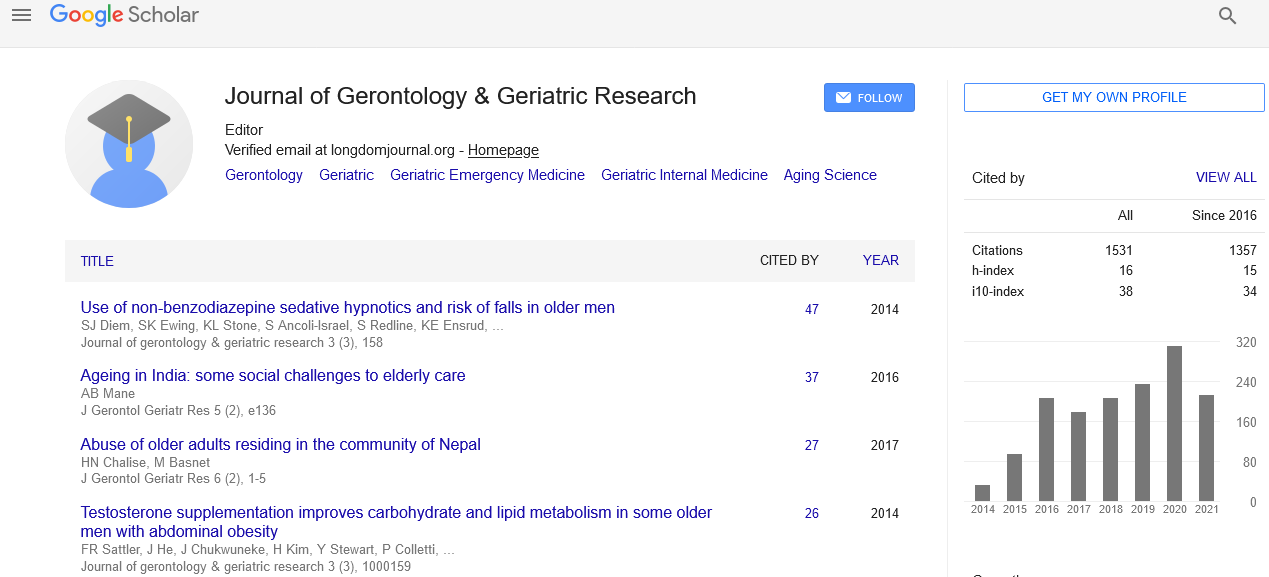PMC/PubMed Indexed Articles
Indexed In
- Open J Gate
- Genamics JournalSeek
- SafetyLit
- RefSeek
- Hamdard University
- EBSCO A-Z
- OCLC- WorldCat
- Publons
- Geneva Foundation for Medical Education and Research
- Euro Pub
- Google Scholar
Useful Links
Share This Page
Journal Flyer

Open Access Journals
- Agri and Aquaculture
- Biochemistry
- Bioinformatics & Systems Biology
- Business & Management
- Chemistry
- Clinical Sciences
- Engineering
- Food & Nutrition
- General Science
- Genetics & Molecular Biology
- Immunology & Microbiology
- Medical Sciences
- Neuroscience & Psychology
- Nursing & Health Care
- Pharmaceutical Sciences
Abstract
Interdisciplinary and Multilevel Research on Determinants of Healthy Aging
Populations in many countries in the world are aging rapidly, with an extraordinary increase of the oldest-old. For example, there were about 18 million oldest-old (aged 80+) in China in 2010; this number will climb dramatically to about 114 million in 2050. This dramatic increase deserves serious attention because the oldest-old consume services and medical care at a much higher rate than the young-old . The average annual rate of increase of China’s oldest-old in 2000- 2050 is estimated to be about 4.4%, which is twice that of industrialized countries. Given that human lifespan is increasing and the number of elderly (especially oldest-old) is rapidly growing, is it possible to realize compression of morbidity , or at least dynamic equilibrium, rather than expansion of disability? Why do some people survive to advanced ages with good health while others suffer severe disability and morbidity? So far, there are few answers to these critical questions, which determine quality of life not only for the elderly but also for all members of society. Thus, it is important to investigate the determinants of healthy aging through interdisciplinary and multilevel research.


